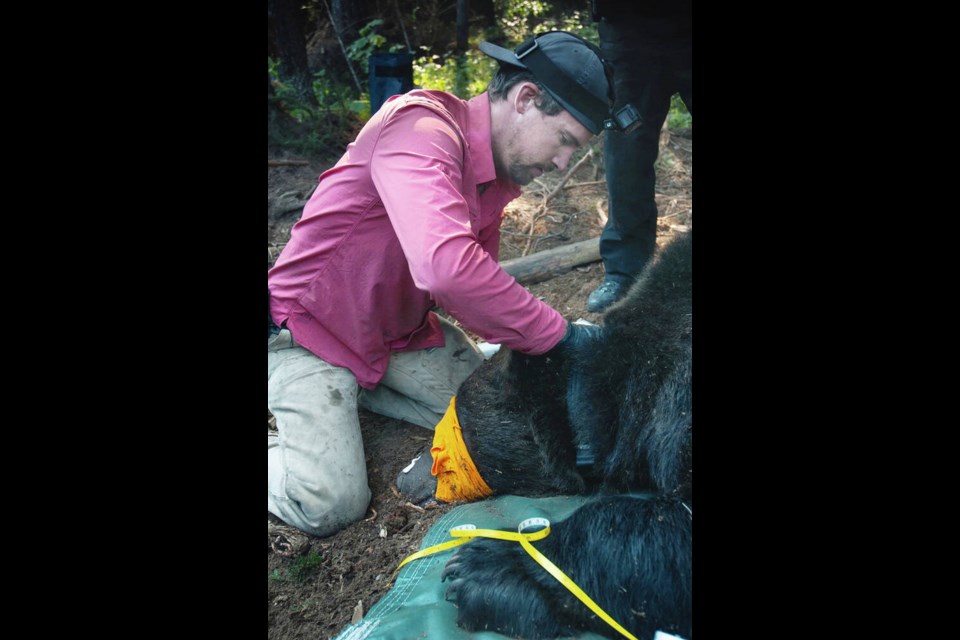British Columbia’s reputation for foot-related mysteries endures.
Five years after B.C. officials solved the decade-long mystery of detached sneaker-clad feet washing up on shore in the region, another, lesser-known foot mystery has been exposed and its cause identified.
During a study to better understand grizzly-bear deaths, Clayton Lamb, now a postdoctoral researcher at the University of British Columbia Okanagan, captured and collared 59 grizzlies in southeastern B.C. between 2016 and 2020.
Four of the bears were missing some front toes. “These were not birth defects,” he says.
Because missing front toes impede the bears’ ability to dig for food and to defend themselves, Lamb looked into the matter.
The injuries had healed but were similar. Lamb determined they were caused by encounters with traps designed to catch furbearers.
“It was clear that baited traps attracted bears and that bears set off the traps to get the food,” he says. “We have pictures and videos showing the bears investigating the traps and manipulating the boxes with their paws.”
The initial snap of the trap didn’t lose the bears their toes. Instead, Lamb says, “The bone loss observed in the bears either happened from a weakening of the bone during necrosis and infection, or from force applied to the bone from the trap while the bear walked or ran with the trap still on its foot.”
The researcher drew on remote cameras, a small small-trap trapping study, and discussions with trappers, Indigenous communities, scientists, conservation officers, wildlife managers and guide outfitters to solve the mystery. Further investigation revealed that similar examples of amputated bear toes occurred elsewhere in B.C. and internationally.
Solving the recurring sneaker-clad human foot mystery, on the other hand, took 10 years, sunken pig carcasses, DNA analytics, and B.C. and 91原创 missing-persons databases.
In 2007, the first gruesome human-foot-in-sneaker was reported found on the shoreline of Jedediah Island, off central 91原创 Island. Six days later, a black and white Reebok with a man’s decayed right foot inside was found on Gabriola Island, 50 km away.
Over the next 15 years, 21 detached sneaker-clad feet were found on Salish Sea beaches in B.C. and Washington. The most recently reported find occurred in early 2019, off Everett, Washington.
Theories abounded, ranging from aliens and a serial killer with a foot fetish to people getting caught in boat lines and containers of migrants washing off freighters.
But in December 2017, the B.C. Coroners Service squashed the speculation. They announced foul play had been ruled out in all investigations to that point. Forensic DNA analysis also linked many of the feet to persons who had been reported missing and were presumed dead due to either accident or suicide.
The coroners’ office also confirmed the feet had become detached through the mundane natural processes of decomposition and scavenging.
Ocean-going cadavers that are going to sink do so quickly and are scavenged quickly. A 2007 study by Simon Fraser University researchers showed seafloor crabs, shrimp, and lobsters reducing a human-sized pig corpse in the Salish Sea to a skeleton in four days.
But scavengers everywhere — beside the highway, in the desert and in the ocean — prefer to start on softer body parts. They zero in on eyeballs, the mouth and nose, fleshy belly bits, and tender connective tissues in our legs and arms.
Those last bits include the ligaments and small muscles that tether feet to a body.
Because the mystery human feet were encased in sneakers, once the extremities were detached, they floated away.
Sneaker foam today is lighter and more buoyant than what used to be used, and sneakers now also tend to have air pockets built into the soles.
These features, along with the sneakers’ other synthetic materials, prevented critters from nibbling the flesh inside, made the feet buoyant, and preserved them long enough to be carried on currents and waves to beaches.
This means sneaker-clad human feet will likely continue to wash up on our beaches periodically. But reducing the number of bear toes amputated by traps is possible.
Small-mammal trapping is generally done in the early winter, when fur is prime and most valuable. Lamb suggests officially delaying the start from Nov. 1 to early December to give bears time to go into hibernation.
Another suggestion involves using a different trap with a smaller, constricted entrance that most bear paws wouldn’t fit into to grab the bait.
>>> To comment on this article, write a letter to the editor: [email protected]



